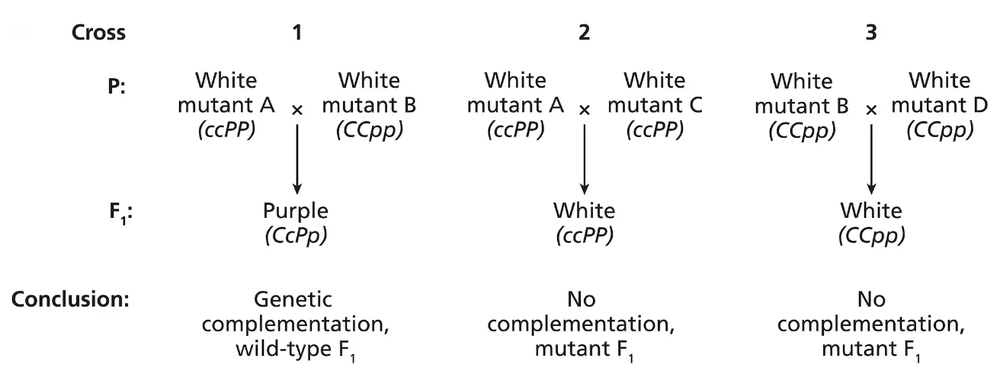A man and a woman are each heterozygous carriers of an autosomal recessive mutation of a disorder that is fatal in infancy. They both want to have multiple children, but they are concerned about the risk of the disorder appearing in one or more of their children. In separate calculations, determine the probabilities of the couple having five children with 0, 1, 2, 3, 4, and all 5 children being affected by the disorder.
Table of contents
- 1. Introduction to Genetics51m
- 2. Mendel's Laws of Inheritance3h 37m
- 3. Extensions to Mendelian Inheritance2h 41m
- 4. Genetic Mapping and Linkage2h 28m
- 5. Genetics of Bacteria and Viruses1h 21m
- 6. Chromosomal Variation1h 48m
- 7. DNA and Chromosome Structure56m
- 8. DNA Replication1h 10m
- 9. Mitosis and Meiosis1h 34m
- 10. Transcription1h 0m
- 11. Translation58m
- 12. Gene Regulation in Prokaryotes1h 19m
- 13. Gene Regulation in Eukaryotes44m
- 14. Genetic Control of Development44m
- 15. Genomes and Genomics1h 50m
- 16. Transposable Elements47m
- 17. Mutation, Repair, and Recombination1h 6m
- 18. Molecular Genetic Tools19m
- 19. Cancer Genetics29m
- 20. Quantitative Genetics1h 26m
- 21. Population Genetics50m
- 22. Evolutionary Genetics29m
2. Mendel's Laws of Inheritance
Probability and Genetics
Problem 35
Textbook Question
Cross-1 shown in the following figure illustrates genetic complementation of flower-color mutants. The produced from this cross of two pure-breeding mutant parental plants are dihybrid (CcPp) and have wild-type flower color. If these F₁ are allowed to self-fertilize, what phenotypes are expected in the F₂ , and what are the expected ratios of the phenotypes?

 Verified step by step guidance
Verified step by step guidance1
Step 1: Understand the genetic basis of the problem. The F₁ plants are dihybrid (CcPp), meaning they have one dominant and one recessive allele for each of two genes involved in flower color. The wild-type flower color in the F₁ indicates that the dominant alleles complement the recessive mutations from the parents.
Step 2: Determine the possible gametes produced by the F₁ dihybrid plants. Since the genotype is CcPp, the gametes can be CP, Cp, cP, and cp, each with equal probability (1/4).
Step 3: Set up a Punnett square to predict the genotypes of the F₂ generation by crossing the gametes from the F₁ plants with themselves. This will give you all possible combinations of the alleles C/c and P/p in the offspring.
Step 4: Assign phenotypes to each genotype based on the dominance relationships. Typically, the presence of at least one dominant allele in each gene (C and P) results in the wild-type flower color, while homozygous recessive combinations in either gene may produce mutant phenotypes.
Step 5: Calculate the expected phenotypic ratios by counting the number of genotypes corresponding to each phenotype from the Punnett square and expressing them as fractions or ratios of the total offspring.
 Verified video answer for a similar problem:
Verified video answer for a similar problem:This video solution was recommended by our tutors as helpful for the problem above
Video duration:
3mPlay a video:
Was this helpful?
Key Concepts
Here are the essential concepts you must grasp in order to answer the question correctly.
Genetic Complementation
Genetic complementation occurs when two different mutations in separate genes produce a wild-type phenotype when combined in a heterozygote. This indicates that the mutations affect different genes, and each parent provides a functional allele for the gene mutated in the other, restoring the normal trait.
Recommended video:
Guided course

Complementation
Dihybrid Cross and Mendelian Ratios
A dihybrid cross involves two genes, each with two alleles, and typically follows Mendel’s law of independent assortment. The F1 dihybrid (CcPp) self-fertilization produces an F2 generation with phenotypic ratios based on combinations of dominant and recessive alleles, often resulting in a 9:3:3:1 ratio for two independently assorting genes.
Recommended video:
Guided course

Branch Diagram
Phenotypic Expression of Flower Color Mutants
Flower color phenotypes depend on the interaction of alleles at two loci, where dominant alleles produce wild-type color and recessive alleles cause mutant colors. Understanding how combinations of C and P alleles affect pigment synthesis helps predict the expected phenotypes and their ratios in the F2 generation.
Recommended video:
Guided course

Penetrance and Expressivity
Related Videos
Related Practice
Textbook Question
453
views


